20 Chilling Mass Disappearances That Still Defy Explanation
Mass disappearances are one of the most haunting enigmas of the world. Countless people have unaccountably vanished from the face of the Earth: complete nations, parties of travelers, ships’ crews, passengers on modern-day aircraft… The cases listed below have baffled search parties and investigators for decades, leaving behind only questions, ruined lives, and perplexing clues that make no sense. There are 20 accounts of mass disappearances listed here that still unsettle historians, scientists, and conspiracy theorists today. Read through the following creepy vanishings that remain unresolved and remain so, unbelievably so.

1. The Sodder Children (1945)
On Christmas Eve, 1945, a house in Fayetteville, West Virginia, was destroyed in a fire. George Sodder and his wife Jennie, and four of their children, were able to escape, but five of their children—Maurice, Martha, Louis, Jennie, and Betty—vanished without a trace. Their house burned to the ground, and no trace of the five children’s bodies were ever found despite an investigation of the ashes by experts who believed some evidence of human remains would be found. It was eventually concluded that the fire was not large enough to have incinerated entirely the five children, and it was suspected that the fire was set intentionally.
In the years following, many rumors and theories abounded as to the fate of the Sodder children, including a mafia hit against George Sodder, who had criticized Benito Mussolini, and a well-executed kidnapping plot.
George and Jennie Sodder conducted their own investigation into the fire, becoming frustrated with a lack of police involvement and the speed with which the children’s deaths were ruled a homicide. They distributed flyers with pictures of the children and private investigators. A billboard along Route 16, featuring photos of the missing children and a large reward offered for information, was a constant presence in the area.
Over the following decades, various leads and tips about the children’s whereabouts were presented, including alleged sightings in several states and multiple times in foreign countries; however, no conclusive evidence was ever found. One of the more infamous tips was a photograph, which was anonymously mailed in the 1960s and which was claimed to be of an adult Louis Sodder.
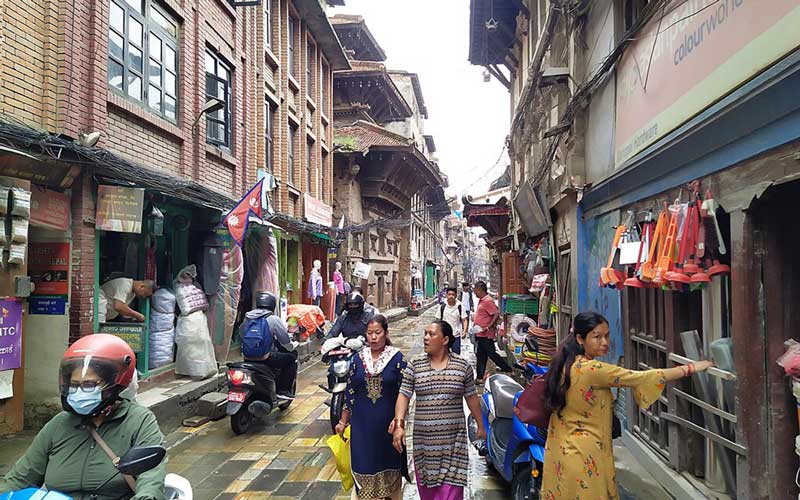
2. The Patan Disappearance (1980s–2000s)
For two decades, the historic city of Patan in Nepal has seen the unexplained disappearances of dozens of children, primarily from poor families. Reports of children vanishing at night, some last seen near temples, local markets, or social gatherings, have become alarmingly common. In some instances, family members claimed to have seen suspicious individuals in the alleys or unfamiliar faces enticing children with money or sweets. Parents and families lived in fear, with their voices often going unheard or being dismissed by local authorities. Over time, speculation and rumors about organized trafficking emerged in public discourse.
Search and rescue operations were initiated sporadically, often suffering from a lack of coordination, resources, and sometimes hindered by corruption and political instability. Activists and NGOs started compiling independent reports, many suggesting human trafficking networks with cross-border dimensions. International attention and pressure have led to temporary government inquiries, but very few cases have resulted in convictions or even formal charges. In recent years, families and local activists have been increasingly demanding transparency, including DNA testing and archiving of cases. Murals and protest marches in Patan have also emerged as forms of remembrance for the missing children. Despite increased awareness and advocacy, the fate of these lost children remains an unsettling mystery.
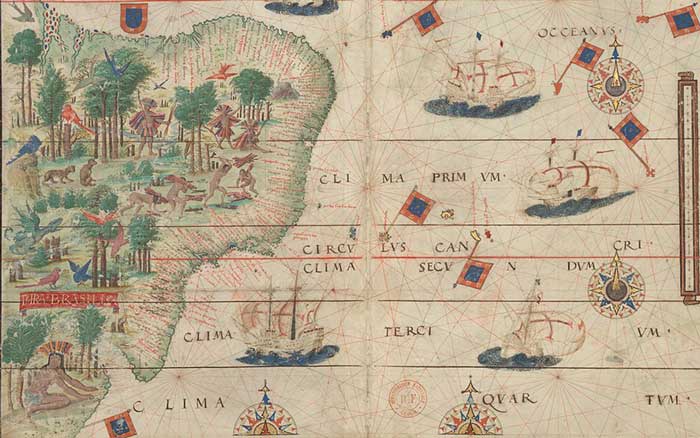
3. The Hoer Verde Disappearance (1923)
In the summer of 1923, a remote Brazilian town called Hoer Verde became the location of one of the most bizarre mass disappearances ever recorded. Officially, every single one of the town’s inhabitants vanished without a trace. Doors remained locked, food half-eaten, belongings in place, with not a scratch or drop of blood anywhere. The Brazilian authorities sent a military investigation team to search the area and found no evidence of human violence or adverse weather or natural phenomena that could have caused an evacuation.
They also found no trace of a mass suicide. The entire population of over 600 people vanished without explanation, leaving the village completely deserted and its fate unknown. The investigation was never followed up on, and no official record of the events exists.
The only existing information comes from hearsay and rumors, as well as a few vague newspaper reports. It is thought that the village might have been relocated in secret as part of a military or political strategy during a time of political unrest in the area, or perhaps even due to extraterrestrial activity. There is, of course, no census evidence of the town’s existence at all, and it could just be a completely false story. Whatever the truth of the matter, the mystery of Hoer Verde remains an unsolved and unexplained mass disappearance to this day.

4. The Flannan Isles Lighthouse Keepers (1900)
In December 1900, a supply boat arrived at the Flannan Isles lighthouse, off the coast of Scotland, to find the station abandoned with no sign of the three keepers – Thomas Marshall, James Ducat, and Donald McArthur. It was as if they had suddenly vanished as the clock on the wall had stopped, the table was still laid with food, and a chair had been knocked over.
The lighthouse logbook, which was found on the station, recorded in the days before their disappearance notes of great storms, oppressive dread, and the need for divine protection – but meteorological reports of the time have found no record of storms in that area at all. The small and isolated nature of the station made it all the more uncanny.
An official enquiry found that they had probably been blown overboard while attempting to secure some equipment in strong winds. No remains were found, and nothing has come to light since. Many theories have been put forward over the years to try to explain their disappearance, some involving mutiny and murder, but some more outlandish, like alien abduction. A new film loosely inspired by the event was released in 2019, which raised its profile; however, no new evidence has been found, and the case remains unsolved.

5. Flight MH370 (2014)
Malaysia Airlines Flight MH370 was a scheduled flight from Kuala Lumpur to Beijing with 239 passengers and crew onboard. The disappearance of the flight on 8 March 2014, during its journey from Kuala Lumpur to Beijing, has generated several inquiries and investigative probes. Shortly after takeoff, contact with the control tower was lost. Early search operations were focused on the South China Sea. Still, military radar and satellite transmissions indicated that the plane had turned sharply away from its planned course, apparently heading into the remote southern Indian Ocean.
This unexpected revelation shocked investigators, intensifying the focus of search and rescue efforts to one of the most inhospitable expanses of ocean on the planet. To this day, the reason behind this drastic change of course and subsequent events remains a mystery.
In the years that have passed, the search for MH370 has been the most costly and elaborate aviation inquiry ever conducted. Joint international efforts have covered vast areas of the ocean floor with sonar technology and unmanned submersibles. Yet, only a handful of confirmed debris has been found on islands such as Réunion and Madagascar. Despite these discoveries, the bulk of the wreckage and the crucial black boxes have not been recovered, complicating efforts to draw firm conclusions.
Theories have ranged from sudden technical malfunctions to deliberate acts such as hijacking or pilot suicide, but none have been definitively verified. In 2018, the official search was suspended; however, private initiatives and advocacy from the victims’ families continue. The mystery of MH370 endures as one of the most baffling and sorrowful episodes in the history of modern aviation.
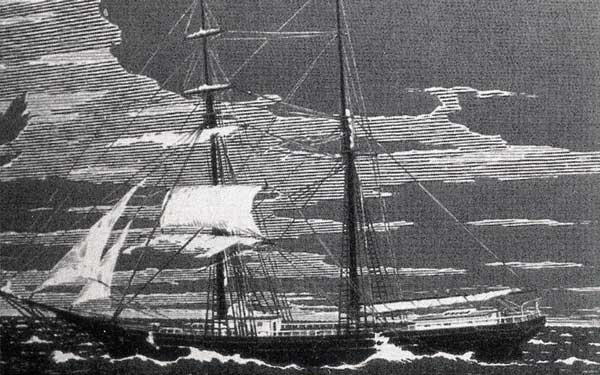
6. The Mary Celeste Crew (1872)
On December 5, 1872, the brigantine Mary Celeste was found adrift in the Atlantic Ocean, off the Azores Islands. There was no sign of life on board; the ship was in good order and condition, and there was no evidence of struggle, storm damage, fire, piracy, robbery, murder, or violent death, although her only lifeboat was missing. Her cargo of industrial alcohol was intact, and the personal effects of her captain, Benjamin Briggs, and crew were undisturbed and aboard. The ship was sailing in fine weather with her sails set. Briggs, his wife and infant daughter, and a seven-member crew had disappeared.
The Mary Celeste mystery has since fascinated the public. At the time of her discovery, the incident was investigated by the press and maritime courts in both the United States and the United Kingdom; however, the legal proceedings left several questions unanswered. Theories of piracy, seaquakes, and mutiny were quickly discounted, and a possible explanation involving poisonous fumes from her cargo, which caused the captain to abandon the ship, being overcome later by thirst, attracted some attention at the time.
This theory, however, could not explain the whereabouts of the missing lifeboat, nor was any trace of it or its passengers ever found. The mystery has since become part of folklore, with numerous alternative theories being advanced, but none have been widely accepted.
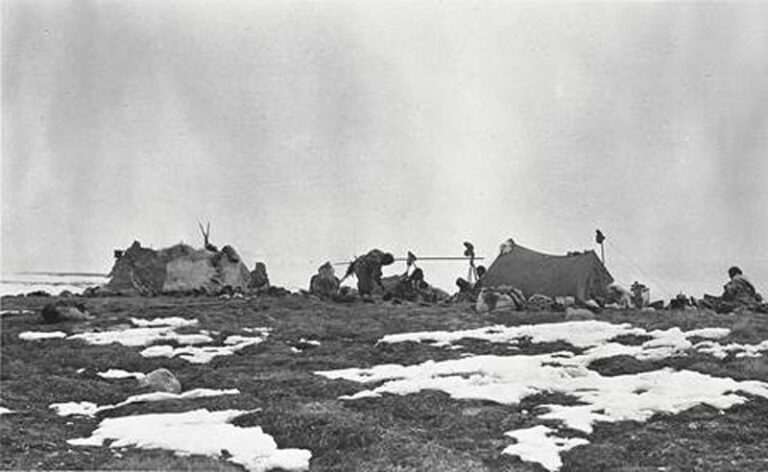
7. The Village of Angikuni Lake (1930)
Joe Labelle, a trapper in the northern Canadian region, reached a small Inuit village by Angikuni Lake in May 1930. He found the village abandoned. Fires had been left burning, meals were half-cooked, and personal belongings were strewn about as if the inhabitants had been in a hurry to leave. Labelle claimed he also found sled dogs frozen to death, still tethered to their posts. He did not find a single human body, and no evidence of foul play or violence was present. Labelle told the story of the village’s mass disappearance to the Canadian Royal Mounted Police and the public. Legend has it that the graves of some villagers were dug up and the bodies taken.
The Royal Canadian Mounted Police were said to have searched the area, but no such report has been found, and the case was only found in government archives. People have claimed to have seen mysterious lights in the sky around the time of the disappearance, which some have used to support a theory of alien abduction. Rumors have also suggested that the story of the Angikuni Lake incident was fabricated or grossly exaggerated. The Angikuni Lake Incident has been passed down through several generations and remains of interest to people in the fields of conspiracy theories, folklore, and the paranormal. The only physical evidence ever found is the deserted village itself.

8. The USS Cyclops (1918)
USS Cyclops disappeared in March 1918. The U.S. Navy collier was sailing from Barbados to Baltimore when it simply vanished, with no distress call or wreckage ever found. Aboard the ship were 306 crew and passengers, as well as a large cargo of manganese ore. Despite extensive searches of the Atlantic, no debris, oil slicks, lifeboats, or other evidence was discovered.
The loss of the Cyclops occurred in what is now known as the Bermuda Triangle, which only added to the mystery of its disappearance. The ship had reported engine issues before her departure but nothing that would have indicated a disaster was imminent. The size and suddenness of the loss left families and investigators both shocked and at a loss.
The Navy initiated an extensive search operation, combing large areas of the Atlantic, but no evidence was ever found. Initial theories focused on structural failure due to overloading and even sabotage during World War I, but no evidence has ever been proven. The captain of the Cyclops, George Worley, was reportedly unstable and not well-liked by the crew, which has led to theories of mutiny or other foul play. To this day, it remains one of the largest maritime mysteries in U.S. history, and no significant developments or discoveries have been reported in over 100 years.
The Cyclops is the largest single non-combat loss of American naval personnel in history and a symbol of inexplicable disappearances at sea.
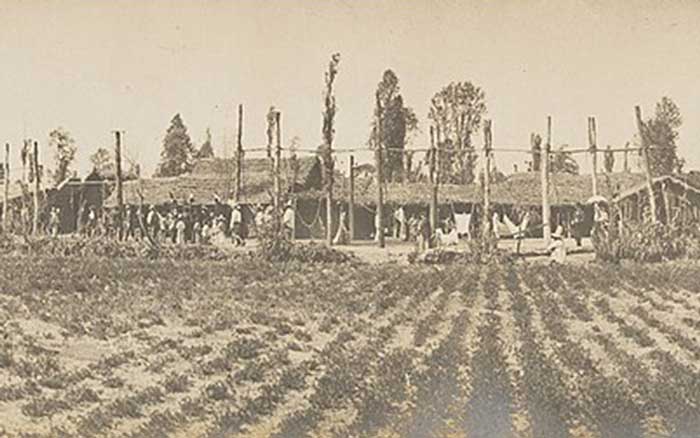
9. The Mexican Witchcraft Village (1980s)
It was in the 1980s when whispers first emerged about an isolated hamlet deep in the northern Mexican mountains that had inexplicably vanished overnight. Locals from border towns insisted they had heard chanting and eerie lights emanating from the mountainous area just days before life in the village came to a sudden halt. As curious wanderers or family members tried to venture in, they found only overgrown trails and empty buildings as if the settlement had never been there at all.
The mystery deepened when the village name appeared only on older maps of the region but had been inexplicably erased from more recent ones. Some speculated that the town had been involved in witchcraft or ancient magic that caused its disappearance.
Mexican authorities, when questioned, denied that the village had ever existed and called the claims folklore or a case of mistaken identity. Nonetheless, researchers and paranormal investigators have pored over satellite imagery and searched the area to find ruins or evidence of what may have happened. Suggestions have included all of the townsfolk having fled cartel violence, a cult group establishing a retreat that went awry, or an otherworldly cause.
Years have passed with no official documentation or tangible evidence that confirms the town’s fate, but the tale lives on in whispers and conspiracy forums. To this day, the “Witchcraft Village” remains a dark mystery shrouded in the unknown of time and terrain.

10. The Beaumont Children (1966)
On 26 January 1966 (Australia Day), Jane (9), Arnna (7), and Grant Beaumont (4) were abducted from Glenelg Beach, near Adelaide, South Australia. A tall, blond stranger who had engaged the children in a friendly manner and who appeared to be known to them was seen in the vicinity. The Beaumont children had often accompanied their parents on day trips to the beach and always returned home safely, but this time they did not.
Their mother, Nancy Beaumont, became alarmed when they did not arrive by the afternoon bus, and the case soon attracted intense public interest. It shattered the illusion of safety that the Australian community lived under at the time, when it was still common to leave young children unsupervised in public places. The case remains a staple of true crime reporting in Australia and brought the nation to a period of public mourning.
Police conducted one of the largest manhunts in Australian history, including door-to-door inquiries, dragging the surrounding waterways, and investigating hundreds of leads. Over the following decades, hundreds of people have been identified and questioned as suspects, including several well-known criminals, but no one has ever been charged. Several theories have been put forward, ranging from child trafficking, child prostitution, and a pedophile ring, to accidental death and a cover-up. No physical evidence has been found.
Periodic searches have been conducted, most recently in 2014, but none have yielded any results. The case is still open.
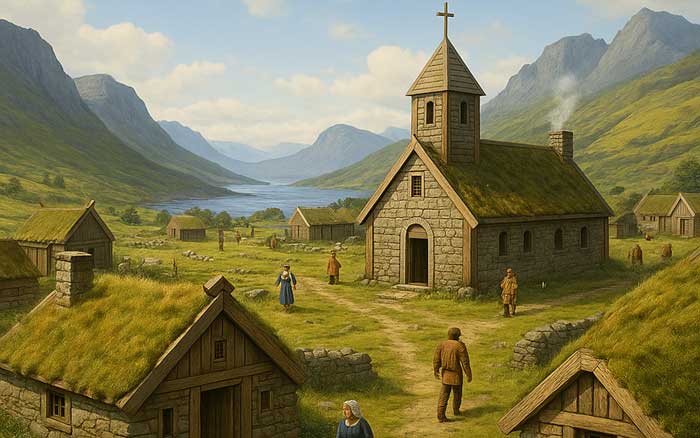
11. The Norse Greenlanders (15th Century)
For almost five centuries, Norse settlers inhabited Greenland, migrating there from Iceland in the late 10th century. They established farms, churches, and even a bishopric in the far north. However, in the 15th century, these settlements mysteriously disappeared.
Archaeological evidence indicates a gradual decline rather than a sudden catastrophe. Over time, homes were left to decay, and even family graves were not maintained. The last written record of the Norse Greenlanders is the account of a wedding in 1408, after which there are no further documents. Despite extensive historical and archaeological research, the reason for their disappearance remains unclear.
There are no signs of a violent end or a natural disaster. In the 20th and 21st centuries, explorations and archaeological excavations have provided some insights. Tools, dwellings, and animal bones discovered suggest a reduction in available food sources and a colder climate, possibly due to the Little Ice Age. Some historians speculate that the settlers were unable to adapt to the changing trade routes and their increasing isolation from Europe, while others propose that they may have attempted to re-cross the Atlantic.
Several controversial theories propose integration with Inuit populations, but there is no direct genetic or cultural evidence to support this. Today, the ruins of Norse stone churches and farms lie preserved in the ice and snow, a poignant reminder of the Norse in the Far West. The exact cause of the Norse Greenlanders’ disappearance is one of the quieter failures of a European colony, leaving the question open for further research and contemplation.

12. The Bennington Triangle (1940s–1950s)
The “Bennington Triangle” is the name given to a region of northeastern Vermont, due to a spate of unexplained disappearances between 1945 and 1950 in and around the Glastenbury Mountain area. The five people who disappeared and were never found included an experienced hiker, a college student, a war veteran, an 8-year-old boy, and an older woman. Some of the people vanished in plain view of others, and at least two were steps ahead of search parties when they disappeared.
The weather was unremarkable at the time of each disappearance, and no sign of the victims was found at the time or in the years since: no blood, no clothing, no footprints. Rumors and local lore quickly attributed the missing persons to portals in the woods, angry spirits, and Bigfoot-like creatures.
In most cases, the searches were exhaustive, conducted by local police and volunteer search parties, sometimes with the assistance of bloodhounds or even helicopters. The areas where the people went missing were uninhabited and rugged, but familiar to some of the victims. Theorists have cited more natural explanations like sinkholes, wild animal attacks, and hypothermia causing people to wander off in confusion, but nothing explains all the disappearances and their strange circumstances. In recent years, the Bennington Triangle has become a focal point for paranormal investigators and amateur sleuths. The cases remain open, and the Glastonbury wilderness remains a popular destination for those seeking to unravel the mystery.

13. The Sarah Joe Five (1979)
In February 1979, five friends left Maui, Hawaii, in a 17-foot Boston Whaler called Sarah Joe on a small fishing expedition. Their boat was caught in a sudden squall and was never seen again. Rescue teams searched the area, but no debris or sign of the missing men was found. The mystery of their disappearance continued for a decade until 1988, when the Sarah Joe was found on the uninhabited Taongi Atoll in the Marshall Islands, over 2,000 miles away. Beside the remains of the boat was a shallow grave. In it were the bones of one of the men and a small wooden cross.
The finding prompted further investigations, but no conclusive evidence was established. The initial search teams of 1979 had spent thousands of square miles searching by air and sea, but somehow had overlooked the spot where the boat had come to rest. The case has left open questions as to how the boat could have drifted so far across the Pacific, and why only one body had been found. There are no signs of the other four men, and theories range from drift currents to darker possibilities. The case is cited as an example of long-distance drift and is often used in survival studies at sea.

14. The Jonestown Survivors (1978)
The Jonestown Massacre was a mass murder-suicide that took place in November 1978 at the Peoples Temple settlement in the jungles of Guyana. Over 900 members of the cult, led by their leader Jim Jones, were found dead. While the bodies were being examined, it was reported that some members of a possible splinter group called the “Red Brigade” (Jones’s armed supporters) may have escaped the settlement and fled into the jungle. Survivors also mentioned seeing members from the Red Brigade escaping the settlement, carrying with them supplies and a few weapons.
Because of the shock of the situation, the body count at the time was not exact and was a moving target, and it was believed that several dozen bodies may have gone unaccounted for. Since then, some have held on to the possibility that some followers managed to escape the settlement and were unaccounted for at the time of the massacre. Persistent conspiracy theories suggest the existence of Jonestown survivors and underground splinter cults that may still exist today. Still, to this day, there have been no confirmed reports of survivors from Jonestown.
However, since it was believed that some of the followers went unaccounted for during the time of the massacre, there is a possibility that some members did manage to escape Jonestown, but they have never been located since the event.
During the time, authorities were not looking for possible escapees, but to recover the bodies and assess the situation, so little to no effort was put into tracking down possible escapees. The Guyanese authorities and a team of American investigators searched the jungle but were unable to find any evidence of a possible surviving splinter faction. It is not known for sure if any members of the Peoples Temple escaped and survived the massacre.
It is believed that if any members escaped and are unaccounted for, they were either from the “Red Brigade” that Jones had established for his armed supporters and special enforcers, or they may have died in the surrounding jungle and were not found during the investigation. They could have also been miscounted during the recovery of bodies, or they may have even returned to the United States and lived under a new identity. However, likely, the members who were believed to have been unaccounted for during the time of the massacre were either miscounted during the recovery of bodies or they died in the surrounding jungle and were never found.

15. The Franklin Expedition (1845)
In the mid-19th century, an expedition of more than 100 men disappeared under mysterious circumstances. In 1845, two British ships set sail to discover the Northwest Passage, a direct route through the Arctic that had long eluded explorers. Commanded by Sir John Franklin, HMS Erebus and HMS Terror carried experienced seamen and adventurers. The ships and men were never seen again, and the few records and clues to their fate pieced together over the last two centuries have provided more questions than answers. The men did not die quickly or all at once, and the cold Arctic seemed to offer little in the way of graves or other clues.
In the decades following, expedition after expedition searched for the ships and the men. Graves, abandoned campsites, a note from Franklin giving accounts of starvation and disease, and possible evidence of cannibalism would later be found. The disappearance of the ships and their entire crews was a national tragedy in Victorian Britain and launched what would become one of the most extensive searches in maritime history.
Over the course of nearly two centuries, dozens of expeditions have scoured the Arctic for clues and documents related to the Franklin expedition. They included archaeologists, explorers, and Inuit with oral histories passed down from their ancestors who lived alongside the ill-fated expedition members in their final days.
In recent years, both ships have been found, still intact in the ice-filled Arctic Ocean, preserved by the cold. Erebus was located in 2014, and Terror in 2016. Questions about the disappearance have only intensified: why did a nearly healthy crew abandon ships that could still sail? Where did they go? The ships and what remains of the expedition are being studied today by research teams.

16. The 9th Roman Legion (c. 120 AD)
The Ninth Legion was a Roman legion, specifically an infantry army unit. They would have seen action in numerous battles throughout the Roman Empire. Historical records cease to refer to the Legion around 120 AD, after it was last recorded as being stationed in northern Britain. There is a widespread belief that the Legion was destroyed in hostile Caledonian territory during one of the frequent uprisings by local tribes, resulting in a massive military defeat.
An alternate theory is that the legion was quietly redeployed to another part of the empire, perhaps to the East, and ceased to be of interest to the writers in the West. The fact that such a large fighting force, with so many supporting personnel, would vanish is one of the great mysteries of the ancient world.
In recent centuries, historians and archaeologists have conducted extensive detective work to unravel the mystery of the Ninth. Excavations of various Roman forts in Scotland have uncovered evidence of short-term military activity, but no evidence of a large-scale battlefield or mass graves that would support a theory of an entire legion being wiped out.
There are various alternative theories, which are supported by the discovery of inscriptions that refer to the Ninth being present in, for example, the Netherlands or the Middle East under different commanding officers; however, so far, there is no conclusive evidence. The mystery has been the basis of the historical novel The Eagle of the Ninth and remains the subject of ongoing academic debate.

17. The Springfield Three (1992)
On the evening of June 7, 1992, high school friends Suzie Streeter and Stacy McCall were set to spend the night at Streeter’s home. The 18-year-old’s friend, Sherrill Levitt, also resided at the address in Springfield, Missouri. The next morning, all three women were reported missing, with no evidence of a struggle and no indication as to what became of them.
The group’s purses, vehicles, and even a pack of Sherrill’s cigarettes remained in the house. The lack of obvious disturbance and the notion that they were home alone suggested to investigators that the women intended to return home at some point. There have been numerous avenues of investigation that authorities have pursued in the years since, including tips, letters, and confessions from convicted criminals, all of which have gone nowhere. A leading theory is that a serial killer abducted the trio, potentially one of the women lured outside or even taken by force by an acquaintance they let into the home. The house where they disappeared was demolished years ago, but the case has not been closed.
The city of Springfield, Missouri, has not given up hope of one day solving the case. In the years since the disappearance, the Springfield Three have gained some level of notoriety both in local communities and in the broader, national true crime community.

18. The Lost Colony of Roanoke (1587)
In 1587, more than 100 English men, women, and children settled on Roanoke Island, off the coast of what is now North Carolina. They planned to make it their home and established a small, if faltering, community. Their governor, John White, returned to England for supplies, but war kept him from returning until 1590. The houses had been dismantled, crops had been abandoned, there were no signs of battle or burial, and, on a fence post, the colonists had carved just one word: “Croatoan.” There was no sign of life and no bodies. The settlement had been abandoned and its 100 or so colonists had disappeared.
Attempts to locate them over the past 400 years have yielded little evidence. It is possible that the colonists lived with a friendly Croatoan (now Hatteras) tribe. They likely died of starvation or disease. It is likely they were attacked by an Indian or slave raiding party or by the Spanish, although no evidence has been found for the latter. Archaeological excavations in recent decades have uncovered artifacts suggesting that the colonists moved, but no evidence has been found to solve the mystery. The case remains one of the first great American mass disappearances and one of the most durable American legends, but one that may never be explained.

19. The Monongah Miners (1907)
On Dec. 6, 1907, a colossal explosion engulfed two adjacent coal mines in the Monongah area of West Virginia, leading to the deaths of at least 362 men. Listed in the national records as the deadliest mining accident in the country, there is widespread sentiment among residents and family historians that the actual death toll was much greater. A significant portion of the miners were new immigrants from Italy, Hungary, and other Eastern European countries.
It is suspected that a large number of undocumented or “rat” workers were paid in cash and never entered into the employment records. The sudden collapse of the mines resulted in these undocumented workers disappearing without a trace—leaving no names on the official rosters, no families compensated, and no recognized deaths. This unexplained loss has cast a long shadow over subsequent generations, who still seek answers and proper acknowledgment of the forgotten dead.
In the immediate rescue and recovery operations, the search was limited to known employees. The official investigation into the incident also did little to follow through on claims of missing undocumented workers. Rumors and allegations of a cover-up by the mining company and local officials persisted for decades, as several families reported missing loved ones who were never included in the official count of the dead. Years of community advocacy eventually led to a broader recognition of the scope of the tragedy, but many monuments and memorials still fail to include these names.
In recent years, family historians and researchers have made efforts to uncover lost identities by utilizing church records and immigration documents; however, a comprehensive list has yet to be published. The tragedy of Monongah remains not just a disaster of staggering proportions but also a chilling reminder of how easily those in vulnerable labor positions can be forgotten from the pages of history.

20. The Yuba County Five (1978)
In February 1978, five men from Yuba City, California, disappeared after attending a college basketball game. The five men, Gary Mathias, Ted Weiher, Jack Madruga, Bill Sterling, and Jackie Huett, had driven to the game in Madruga’s car, and all five went missing without a trace. Their vehicle was eventually found miles away from the game and the route back home, abandoned in a remote area on a mountain road with no apparent damage or signs of struggle. Months later, four of the men were found dead in and around a Forest Service trailer deep in the Sierra Nevada.
The four had died of exposure and starvation, with enough food and supplies around them to have survived for weeks. The other man, Gary Mathias, was never found. The case has remained a mystery.
Searchers scoured the mountains near the car’s location in the days after it was discovered, but snow and freezing conditions hindered the search until the spring thaw, when hikers found the trailer and the bodies. Theories have since run the gamut about how the group, some of whom had intellectual and mental health issues, ended up driving into the mountains that day: simple navigational error, foul play, or a breakdown of some kind.
Mathias’s disappearance remains open, with occasional new leads investigated by investigators over the years, but none that have resulted in any clear answers. To this day, the case has fascinated true crime enthusiasts and amateur sleuths, and the case remains disturbingly open-ended, with the question of why the men drove so far off-route haunting investigators.
The Haunting Legacy of Mass Disappearances
Reflecting on these 20 eerie mass disappearances, one theme is evident: The unknown is a captivating and formidable force. Natural phenomena, human malevolence, or inexplicable events, the result is always heartbreak and a lingering feeling of dread. These stories persist not only because of their unsolved nature but also because they test the limits of our understanding. In a world that prizes rationality and proof, these disappearances stand as unwavering anomalies.








